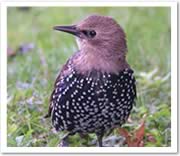| • |
Shooting
under front lighting |
| Shoot with the sun to your back.
Better results can be generally obtained by photographing subjects
lit from the front. |
| • |
Start by using a lower-magnification
eyepiece. |
| Use a low-magnification eyepiece
and a wide-angle setting on the camera to reduce the risk of failure
when taking pictures. If the distance between your camera and subject
is short, you can capture close-up images. |
| • |
Use a higher-magnification
eyepiece to capture close-up images. |
| For super-telephoto shooting, use
a higher-magnification eyepiece instead of a telephoto setting. Use
a wide-angle setting to improve the ratio of better images. Be careful
of vignetting when shooting at a wide-angle setting. |
| • |
Creatively framing
pictures |
| |
While it's OK to place your
subject in the center of the frame, a better composition is possible
by leaving some space ahead of the bird.
You could also include the beautiful natural surroundings behind
your subject by using a slightly wide-angle setting, in combination
with close-up images.
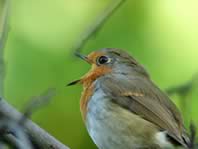 |
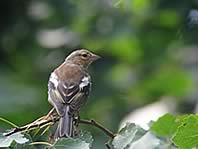 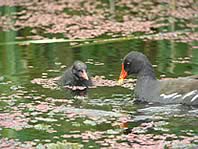 |
| • |
This image
demonstrates a better composition that leaves some space
ahead of the subject. |
|
| • |
It is
interesting to include natural surroundings behind the
subject. |
|
|
| • |
Using background surroundings
creatively |
| |
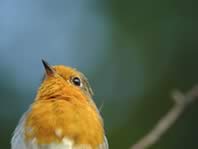 You
can effectively show a bird's fine colours by framing it against
a slightly darker background. Target a bird in the shade to better
capture its colours. When taking a photo of a subject against a
bright background such as the sky, the background appears brighter
than the subject, so use plus exposure compensation. Check your
captured images immediately after shooting. If needed, you can
then make the necessary exposure compensation and reshoot. You
can effectively show a bird's fine colours by framing it against
a slightly darker background. Target a bird in the shade to better
capture its colours. When taking a photo of a subject against a
bright background such as the sky, the background appears brighter
than the subject, so use plus exposure compensation. Check your
captured images immediately after shooting. If needed, you can
then make the necessary exposure compensation and reshoot. |
| • |
Using the continuous
capture mode |
| |
Using the camera's continuous
capture mode and patiently taking as many pictures as possible
will help you to capture the best images of moving subjects. |
| • |
If you have
no special sighting device on hand, turn the ED82 hood's line
of sight to the proper position and bring the subject within
the viewfield. |
|
| • |
Until you are fully
used to your equipment, particularly the camera, carry the instruction
manual at all times. |


